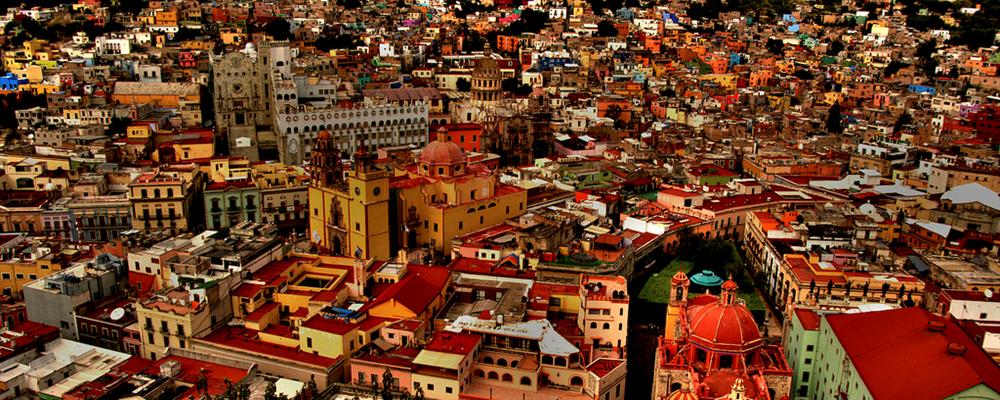
Mexico
( 2 user reviews )Mexico (officially: the United Mexican States) is a country in North America, lying between the United States of America to the north, and Guatemala and Belize to the southeast. Its extensive coastlines include the Gulf of Mexico and the Caribbean Sea to the east and the Pacific Ocean to the west. Mexico has nice and warm people, unique food, art and archeology, pyramids, museums, Haciendas, 6,000 miles of shoreline, superb architecture and 21 century cities, weather from snow mountains in the Sierras, to rainy jungles in the Southeast and desert in the Northwest, lots of golf courses throughout the country, excellent fishing, world top destinations like Acapulco, Cancun, Cozumel, Los Cabos, and Patzcuaro. Mexico is ranked 7th major destination for foreigner visitors, according to WTO.
Understand
Mexico is one of the most popular tourist countries on earth (over 20 million foreign visitors last year). Much of the tourist industry is centered around the beach resorts as well as the altiplano in the central part of the country. Visiting the northern interior allows visitors to get off the beaten path a bit. American tourists tend to predominate on the Baja peninsula and the more modernized beach resorts (Cancún, Puerto Vallarta), while European tourists congregate around the smaller resort areas in the south like Playa del Carmen and colonial towns San Cristóbal de las Casas.
Climate
Mexico uses the metric sytem for all measurements. All weather forecasts will be in celsius (°C).
Varies from desert-like regions on the northwest part of the country (cities like Hermosillo, Ciudad Juárez, or Los Cabos); and temperate in the northeastern part (cities like Monterrey, Nuevo Laredo, Ciudad Acuña), but note that much of the northern Mexican territory gets rather cold during the winter with average day time highs from 8C (39F) to 12C (59F), overnight lows average around -4C (24F) and snow is sometimes frequent in certain northern places like (the Sierra Madre of Chihuahua, Durango, Coahuila, Nuevo León, and northern Tamaulipas) but can also occur at higher altitudes in the temperate forests in the central part of Mexico. Also, northern Mexico gets very hot during the summer with sudden violent storms in the afternoon, with heavy rain and hail, also an isolated tornado can occur with these storms but rarely, and the temperatures during the day can quickly exceed 39C (100F). The Bajío region is semiarid (cities like Aguascalientes, León and Zacatecas); and temperate forests in the central part of the country (Mexico City, Toluca), and tropical rain forests in the south and southeast regions like (Chiapas, Cancún). The region stretching from Guadalajara to Morelia enjoys what many consider one of the best climates in the world, with daily high temps in the high 70s and 80s year round. During hurricane season, hurricanes are common in the coastal cities specially those near the Caribbean Sea and the Gulf of Mexico.
Landscape
High, rugged mountains; low coastal plains; high plateaus; temperate plains with grasslands and Mezquite trees in the northeast, desert and even more rugged mountains in the northwest, tropical rainforests in the south and southeast (Chiapas, Cancún) semiarid in places like (Aguascalientes, San Luis Potosí) and temperate coniferous and deciduous forests in the central part of the country (Mexico City, Toluca).
Holidays
-
January 1st
-
January 6th: The Three Kings day, celebrating arrival of the Three Kings to see and bring gifts to baby Jesus.
-
February 2nd: The Candelaria Virgin Day, celebrated in many places around the country (not an official holiday)
-
February 5th: Constitution Day(1917)
-
February 24th: Flag Day (not official)
-
March 21st: Birth of Benito Juárez (1806). 2006 was the bicentennial year.
-
May 1st: Labor Day.
-
May 5th: The Battle of Puebla against the French army, 19th century. (Not an official holiday)
-
September 1st: Dia del Informe. Although no longer official, it is still important as it is the day in which the Mexican President addresses to the Nation of the progress his administration on a yearly basis. Every President makes six Informes
-
September 16th: Independence day (celebrates the start of the fight for the independence from Spain in 1810, achieved until September 27th, 1821).
-
October 12: Discovery of America (Descubrimiento de America)(not an official holiday)
-
November 2nd: Day of the dead (Not an official holiday)
-
November 20th: Revolution day (1910)
-
December 12th: Virgin Mary of Guadalupe Day. Unless is not official, is one of the most important Mexican Holidays
-
December 24th: Christmas Eve (Not an official holiday, but usual full non working day or only half day)
-
December 25th: Christmas
-
December 31st: New Years Eve (Not an official holiday, but usual full non working day or only half day)
Easter is widely observed nationwide, according to the yearly Catholic calendar (the first Sunday after the first full moon in Spring). Actual non working days may shift to the Monday before the holiday, so check an up to date calendar.
Time
- Mexico uses the 24-hour clock system for time keeping. Mexico observes daylight savings time (DST) the same way as the USA did pre-2007, from first Sunday in April to last Sunday in October. This now includes the tropical regions of southern Mexico as well. Note there will be several weeks each year when the U.S. is on DST, but Mexico is not. The state of Sonora south of Arizona, does not observe DST since Arizona doesn't have it either.
Regions
- Baja California - The western peninsula, which borders the U.S. state of California
- Northern Mexico - Includes the expansive deserts and mountains of the border states; mostly ignored by tourists, this is "Unknown Mexico"
- The Bajio - Historic states in a traditional silver-mining region
- Central Mexico - Center, surrounding the capital city
- Pacific Coast - Tropical beaches on Mexico's southern coast
- Yucatan Peninsula - Jungle and impressive Mayan archaeological sites, along with the Caribbean coast
Cities
-
Mexico City - Capital of the Republic, one of the three largest cities in the world, and a sophisticated urban hub with a 700-year history. In Mexico City, you will find everything from parks, Aztec ruins, colonial architecture, museums, to nightlife and shopping.
-
Acapulco - A sophisticated urban beach setting known for its top-notch nightlife, elegant dining, and nightmarish traffic. Many of the older (pre-1990s) concrete structures have suffered tropical decay.
-
Cancun - One of the worlds most popular and famous beaches, known for its clear Caribbean waters, its lively party atmosphere, and its wealth of recreational facilities. During Spring Break it is noted for drinking, sunburning, and debauchery.
-
Guadalajara - A traditional city, capital of Jalisco state, and the home of mariachi music and tequila. Guadalajara is blessed with perpetual spring weather and its colonial downtown is graceful and sophisticated.
-
Mazatlan - Lively Pacific coast town, Mazatlan is a shipping port, a transportation hub with ferries to Baja California, and a beach resort destination with miles of sandy shore. It is a popular Spring Break destination due to its variety of affordable lodging options.
-
Monterrey - A large modern city that is the commercial and industrial hub of Northern Mexico. Monterrey enjoys a dry, mountainous setting and is known for its high-quality educational and transportation infrastructure.
-
San Luis Potosi - Located in central Mexico, a colonial city that was once an important silver producer, but today, relies on manufacturing for its economic base.
-
Taxco - In central Mexico west of Cuernavaca, this nice steep mountain town was once a major silver producer, and now has a strong place in the trade of decorative silver, from cheap fittings to the most elegant jewelry and elaborate castings.
-
Tijuana - Mexico's busiest border crossing for pedestrians and private vehicles, and a long-time bargain Mecca for southern Californians due to its proximity with San Diego.
Other destinations
- Copper Canyon (Barrancas del Cobre) - An exotic destination for travellers looking for a unique remote adventure! An awesome mountain rail ride --- one of the greatest in the world --- takes you upwards over 8000 feet on the CHEPE, the Chihuahua al Pacifico Railway. Hiking, horseback riding, birding, and Tarahumara Indians. Copper Canyon, the Sierra Madre and the Chihuahuan desert of Mexico. This area is designed for adventurous individuals who will tolerate some rough travel to get to their point(s) of interest. Copper Canyon, a magnificent remote wilderness is not likely ever to become a mass market destination.
NOTE: If taking the CHEPE train ride, start your trip at El Fuerte (NOT Los Mochis!) on the western side and travel uphill to Creel or Chihuahua. Stand in the few open vestibules with your camera -- the uphill scenery is fairly splendid for at least two of the seven or nine or twelve hours of the journey. On the downhill run, put yourself in the club (bar) car, where you can stretch out in a modicum of comfort. The first-class (express) and second-class (tourist) trains are essentially the same, except that the express stops less and is twice as expensive.
-
Sea of Cortez - See whale birthings, swim with dolphins, and sea kayak in the warm waters of the Sea of Cortez, along the eastern coast of Baja California, near La Paz. And the sunsets at Puerto Peñasco and San Carlos are not to be missed.
-
Monarch Butterfly Breeding Sites - Protected natural areas in the highlands of the state of Michoacán. Millions of butterflies come to the area between November and March of each year, although numbers have declined sharply recently. See them before they're all gone.
-
Sumidero Canyon - From docks on the Rio Grivalva (the only major river within Mexico) near Tuxtla Gutiérrez in Chiapas state, tour launches take you into this steep-walled National Park. You'll likely see vast flocks of flamingos, pelicans, and other waterfowl, as well as crocodiles.
Archaeological Sites
-
Chichen Itza - Majestic Mayan city, declared a UNESCO World Heritage Site in 1988 and recently voted as one of the New Seven Wonders of the World.
-
Ek Balam - Recently reconstructed Mayan site, famous for its unique decorated stucco and stone carved temples.
-
El Tajín - In the state of Veracruz near the town of Papantla. A UNESCO World Heritage Site.
-
Guanajuato - In the state of Guanajuato, two sites making part of the "Tradición él Bajío": Plazuelas and Peralta.
-
Monte Albán - In the state of Oaxaca, a Zapotec site dating from about 500 B.C. A UNESCO World Heritage Site.
-
Palenque - Mayan city in the state of Chiapas, Palenque famous for its elaborate paintings. Also well known for having the largest tract of rainforest in Mexico located in the same area.
-
Teotihuacan - In the state of Mexico, near Mexico City. Enormous site with several large pyramids.
-
Tulum - Mayan coastal city with spectacular Caribbean vistas. Dates from late Mayan period.
-
Uxmal - Impressive Mayan city-state in the Puc Region, declared a UNESCO World Heritage Site in 1996.
Getting there
By plane
-from Australia or New Zealand- Fly from either Sydney, Brisbane, Melbourne or Auckland(NZ) direct to Los Angeles. Delta, Qantas, United, and V Australia offer non-stop air service from Australia to Los Angeles. Air New Zealand offers one-stop air service from Australia and non-stop air service from Auckland to Los Angleles. Hawaiian Airlines and Air Tahiti Nui offer one- or two-stop air service to Los Angeles from Australia and New Zealand.
Many airlines fly from Los Angeles to Mexico including AeroMexico, Alaska, Volaris, Horizon, Aerolitoral, and United. More options are aviailable if connecting through another U.S. city. Also, make sure to have a good look at visas beforehand - even just for transit you will need something for USA, and if you get a visa waiver, they treat Mexico as part of USA, meaning if you stay longer than 90 days in Mexico, you will need to travel further south before returning to USA.
-from Europe- Most commercial airlines link Mexico directly to Europe. It is always worth to compare flight offers from aircarriers who can bring you to Mexico City or Cancun via many european hubs, like Frankfurt, Paris, Amsterdam, Madrid.....the flight duration from those cities is always approx. 11 hours (+ your connecting flight from home, if you do not board directly at the mentioned airports)
By train
There is at least one place where Mexico is accessible via rail and a short walk - south of San Diego. The San Diego Trolley can be taken from downtown San Diego (which Amtrak serves) to the California-Baja California border. (note: El Paso/Juarez is also well served by Amtrak, the station is within a stones throw of the Rio Grande)
By car
American automobile insurance is not accepted in Mexico, however it is easy to obtain short-term or long-term tourist policies that include the mandatory liability coverage, theft and accident coverage for your vehicle, and often, legal assistance coverage. Should you decide to drive to Mexico, the Transport and Communications Secretariat website has free downloadable road maps.
Foreign-plated vehicles must obtain necessary permits before being allowed into the interior of Mexico. This can be done at the border checkpoints by showing your vehicle title or registration, as well as immigration documents and a valid credit card. It is now possible to apply for your vehicle import permit online. Vehicle permits will only be issued to the registered owner of the vehicle, so the papers will have to be in the name of the applicant. The Baja California peninsular and the northern part of the State of Sonora do not require a permit.
Due to the incredibly high volume of drugs and illegal immigration (into US)and drug money & weapons,(into Mexico) crossing the US-Mexico border, expect long delays and thorough searches of vehicles when crossing the border. At some of the busiest crossings, expect a queue of 1-3 hours.
By bus
The Mexican bus system is reportedly the most efficient in the world. There are many different independent companies but all use a central computerized ticketing system. Rates per mile are generally comparable to those of Greyhound in the U.S., but there are more departures and the system serves much smaller villages than its American counterpart. There are many bus companies based in Mexico with branch offices in major U.S. cities. A ticket to a major Mexican city from the U.S. can be bought for as little as $60 roundtrip (San Antonio TX to Monterrey N.L.). These companies, however, do cater to mostly Hispanics or Mexican Nationals living in the U.S. and operate mostly in Spanish.
By boat
-
Border crossing from Guatemala.
-
Cruise ships from United States.
Visa Requirements
According to the Mexican Ministry of Foreign Affairs (Secretaria de Relaciones Exteriores), certain foreign nationals who intend to stay in México fewer than 180 days for the purpose of tourism or 30 days for business can fill out a tourist card (FMT) at the border or upon landing at an airport for a nominal fee (approx US$22) and presenting a valid passport. This service is available to citizens of Andorra, Argentina, Australia, Austria, Belgium, Bulgaria, Canada, Chile, Costa Rica, Czech Republic, Denmark, Finland, France, Germany, Greece, Hong Kong, Hungary, Ireland, Israel, Italy, Japan, Liechtenstein, Luxembourg, Monaco, Netherlands, New Zealand, Norway, Paraguay, Poland, Portugal, Puerto Rico, San Marino, Singapore, Slovakia, Slovenia, Spain, South Korea, Sweden, Switzerland, United Kingdom, United States, Uruguay and Venezuela.
If you cross the border via road, do not expect the authorities to automatically signal you to fill out your paperwork. You will have to locate the border office yourself.
Other people must contact a Mexican consulate in order to find out the requirements for citizens of their country, and may have to apply for and obtain a visa in advance of travel. If you are in need of other information, Mexico has diplomatic offices in the following cities around the world: . The consulates in the USA are typically open for business to non-citizens (by telephone or in-person) only from 8:30 AM to 12:30 PM.
The immigration officer at your point of entry into Mexico can also request that you demonstrate that you have sufficient economic solvency and a round trip ticket.
If you do not intend to travel past the "border zone" and your stay does not exceed three days, U.S. and Canadian nationals require only a proof of citizenship. Reentry into the United States generally requires a passport, but a U.S. or Canadian Enhanced Drivers License (or Enhanced Photo ID) or U.S. passport card is acceptable for reentry by land or sea.
Traveling around
Travelling in Mexico is most practical by bus, car, or air. Passenger transport by train is almost nonexistent. Except the Chihuahua del Pacifico rail line which pull out every morning at both ends of the line, one from Los Mochis on the Pacific coast, across from Baja California, and the other from Chihuahua in the east (due south of El Paso, Texas). They cross each other roughly midways at Divisadero and Barrancas Copper Canyon stations at 7000 Ft. altitude.
By car
Due to a government scheme in the early 90s to create infrastructure, the best roads are toll roads. Toll roads can be relatively costly (400-800 pesos is not uncommon on longer trips) but are much faster and better maintained. First-class buses generally travel by toll roads (and the toll is obviously included in the ticket price). US vehicle insurance is not valid in Mexico and while Mexican auto insurance is not required, it is highly recommended, as any minor accident could land you in jail without it. MexiPass and AAA offer Mexican auto insurance.
When traveling on Mexican roads, especially near the borders with the United States and Guatemala, one will probably encounter several checkpoints operated by the Mexican Army searching for illegal weapons and drugs. If you are coming from the United States, you may not be used to this, and it can be intimidating. However, these are rarely a problem for honest people. Simply do what the soldiers tell you to do, and treat them with respect. The best way to show respect when entering a checkpoint is to turn your music down, lift sunglasses from your face, and be prepared to roll your window down. They should treat you with respect as well, and they usually do. If you are asked to unpack any part of your vehicle, do so without complaint. It is their right to make you completely unload in order for them to inspect your cargo.
Tourists are often warned about traveling on roads at night. Although bandidos are rare in more metropolitan areas, err on the side of caution in more rural areas. The best bet is to drive during only daylight hours. Cattle, dogs, and other animals also can appear on the roadway unexpectedly, so if you do have to drive at night, be very cautious. If possible, follow a bus or truck that seems to be driving safely.
The Secretariat of Communication and Transport recently set up a new mapping tool similar to those in the U.S. like Mapquest, its name is Traza Tu Ruta and is very helpful to find how to get to your destination using Mexico's roads. It is in Spanish but can be used with basic knowledge of the language.
Foreign drivers' licenses are recognized and recommended. Speeding tickets are common, and to ensure your presence at the hearing, the officer may choose to keep your license. He is within his rights to do so.
At petrol (gas) stations, make sure the pump is zeroed out before the attendant begins pumping your gas so that you don't end up paying more than you should. There is only one brand of gas station (Pemex) and prices are generally the same regardless of location, so don't bother shopping around.
Good maps are invaluable and the Mexico maps included in "North American Road Atlas" books are worse than useless. The Guia Roji maps are particularly good.
See also: Driving in Mexico
By plane
Mexico is a large country and the low-cost revolution that started in 2005 means that fares are often ridiculously cheap if you book in advance. Note that now with the increases in fuel charges the bargain days are mostly gone and the airlines have had to raise prices to survive the recent recession. But, there are bargains to be found and you can keep abreast by signing on to a reliable notification service such al Kayak.com.
The main full-service airlines, in addition to the major US carriers, are Aeromar , AeroMexico and AeroMexico Connect (formerly Aerolitoral). The rapidly changing palette of low-cost carriers includes InterJet , Volaris , Viva Aerobus and NOTE: Mexicana Airlines filed for backruptcy this fall (2010) and other carriers are in the process of picking up Mexicana's former routes. Always check the individual carrier's website to see just where they fly at this point. Things are changing somewhat rapidly now.
By bus
If traveling by bus, be sure to take the express buses, if available (they are called directo). Other buses often stop at many smaller stations along the way, making the trip a lot longer. If you have experience with Greyhound buses in the US, you're in for a pleasant surprise. First class buses are usually direct routes and are the best option for most. These buses are comfortable, have washrooms and will generally show movies, which may or may not be English with Spanish subtitles. Second class buses may be very similar to 1st class just making more stops or in rural areas they may be essentially chicken buses (polleros). Executive and Luxury lines cost about 60% more than first class, may be faster, usually have larger seats, and they have less frequent departures; they are really only a good option for elderly or business travelers. With the advent of NAFTA, some bus companies are now offering service from US cities. The major bus companies offering these kind of services are Grupo Ado , Estekka de Ori (Estrella de Oro) , Enlaces Terrestres Nacionales , White Star Group (Estrella Blanca) , Red Star , and Primera Plus .
Travellers heading east (more or less) from Mexico City (TAPO bus terminal) can find ticket information on TicketBus . Other destinations can be found on individual companies' websites. The north of Mexico, for instance, is service by Omnibuses de Mexico or ETN .
On the other side if traveling within a city, you won't find a pleasant surprise. You will find one of the most chaotic public transport systems full of the popular "peseros". "Peseros" are small buses with varying color codes depending on the city you are. Usually the route taken is written on cardboard attached to the windshield. Unlike in many countries, bus stops are uncommon and you are expect to signal the bus to pick you up and drop you off wherever you want. You will rarely find a stop button in a pesero; just shout the word "baja" for it to stop. Fares are cheap and vary from 2 to 7 pesos approximately.
By train
Passenger trains are very limited in Mexico with only a few lines in operation in places like the Copper Canyon in the northern state of Chihuahua, that line is also known as the Chihuahua Pacific Railway since its final destination is the Pacific coastal city of Tobolobampo in the state of Sinaloa. In the state of Jalisco there is also a line which travels from the state capital city Guadalajara to its final destination in the small town of Tequila, this is why this line is called the Tequila Express . In the Yucatan Peninsula there is a line of passenger trains which runs from Villahermosa through Campeche, Merida, Playa del Carmen and its final destination being the city of Cancun, this train also runs through a few Mayan ruins including Chichen-Itza and this gives it its name of the Expreso Maya which is Spanish for Mayan Express. Mexico City and Monterrey have subway service, and it might be possible to hop aboard freight cars in some parts of the country (if you happen to be an adventurer).
By thumb
One upside of the high petroleum prices is that hitching is beginning to be more common in Mexico again, particularly the rural areas. In areas near big cities, hitching should be more difficult, and is not really advisable due to security reasons. However, in village areas, this will be really possible and most likely a nice experience. Since villagers have always had a hard time affording gas, and nowadays many are turning to picking up paying hitchhikers as a way to afford the next trip into town. Baja, the Sierra Tarahumara and Oaxaca and Chiapas all have good possibilities for the hitchhiker. Hitchhiking possibilities vary according to region. Mexican culture is often accepting of hitchhiking and it's a common practice among Mexican youngsters going to the beach in Easter vacations, though in some cases a money contribution is expected for gas because of its relatively high prices. You should make it clear that you have no money to offer before accepting the ride, if this is the case. If you're willing to pay, trucks will often provide lifts for about half the price of a bus ticket. Of course you may be able to negotiate a better deal. Hitchhiking is considered fairly safe and easy in the Yucatan Peninsula.
Things to do
-
Surfing - Baja California, Vallarta, Oaxaca
-
Sea Kayaking - Baja California
-
Snorkeling - Baja California, Cancun, Cozumel, Isla Mujeres, etc.
-
Scuba diving - Baja California, Cancun, Cozumel, Isla Mujeres, Acapulco, Cabo San Lucas etc.
-
Whale Watching - Baja California, Guerrero Negro
-
White Water Rafting - Veracruz
-
Visit a Volcano - Mexico, Toluca etc.
-
Take a ride on the Copper Canyon Railway
-
Enjoy the beautiful coast line and beaches of Oaxaca - Mazunte, Puerto Escondido, etc.
-
Go for a horseback ride in the Barrancas de Chihuahua
-
Visit the archaeological sites - Chichen Itza, Tulum, Coba, Monte Alban, Calakmul, Palenque, etc.
-
Volunteering - Chiapas or in Xalapa, Veracruz with Travel to Teach.
-
Visit ecological parks - Mayan Riviera
-
trekking also cave paintings in Baja California - Guerrero Negro
Eat
Mexican cuisine can be described better as a collection of various regional cuisines rather than a standard list of dishes for the whole country. Because of climate, geography and ethnic differences, we can classify Mexican cuisine broadly in 4 great categories according to the region:
-
Northern - Mostly meat dishes done mainly from beef and goat. This includes Cabrito, Carne Asada (Barbecue) and Arrachera. Is influenced by international cuisine (mostly from the United States and Europe), but it retains the essential Mexican flavor.
-
Central - This region is influenced by the rest of the country, but it has its well developed local flavor in dishes such as Pozole, Menudo and Carnitas. Dishes are mostly corn-based and with different spices.
-
Southeastern - Is known for its spicy vegetable and chicken-based dishes. Caribbean cuisine have influences here because of the location.
-
Coast - Is composed heavily with seafood and fish, but corn-based recipes can be easily found as well.
Ask for the "platillo tipico" of the town, which is the local speciality that may not be found elsewhere, a variation, or the birthplace of a recipe, also consider that most of the recipies change from place to place, like tamales, in the south are made with the banana plant leaves, and in the Huasteca region tamales are very big, one is OK for a complete family.
Traditional Mexican food can often be very spicy; if you are not used to peppers, always ask if your food includes it. "(¿Esto tiene chile? Es picante?)."
There are many food carts on the streets of Mexican cities and towns. Travellers are advised to eat from these carts with caution, as hygienic preparation practices are not always reliable. In doing so, you may (or may not) find some of the most unique and genuinely Mexican dishes you've ever had. From these vendors, you may find tacos, burgers, bread, roasted field corn or elote served with mayonaise, or a light cream, and sprinkled with fresh white cheese, roasted sweet potato called camote, and almost any kind of food and service you would imagine.
-
Chicharrón - Deep fried pork skin. Quite crunchy and if well-prepared slightly oily. Heavenly spread with guacamole. Or sometimes cooked in a mild chili sauce and served with eggs.
-
Enchiladas - Chicken or meat stuffed soft tortillas covered with green, red or mole sauce. Some may have melted cheese inside and/or on top.
-
Tacos - Soft corn tortillas filled with meat (asada (steak strips), pollo (shredded chicken), carnitas (fried shredded pork), lengua (tongue), cabeza (meat from cow skull), sesos (cow brains), tripa (cow gut), or pastor (chilli pork beef). In the north sometimes flour tortillas are used. Do not expect the crispy taco shell anywhere.
-
Tamales - corn dough shell with meat or vegetable fillings. Tamales Dulces contain fruit and/or nuts.
-
Tortas - Fancy mexican sandwich. Bread roll that is grilled lightly, meat fillings are same as tacos, lettuce, tomatoes, jalapeños, beans, onion, mayonaise and avocado. One is beginning to find tortas with the American styled cold cuts available, as well, in urban areas.
-
Quesadillas - Cheese or other ingredients grilled in between corn tortillas. Note: heavy on cheese and and lighter on other items such as chicken, pork, beans, squash flower blossoms and such.
-
Mole - Mild to medium chili based sauce made with cocoa and a hint of peanut over meat, usually served with shredded chicken or turkey. ('Pollo en mole' and this is known as Puebla or poblano style). There are many regional moles and some are green, yellow, black and can vary greatly in flavor depending on the artistic talent or preferences involved.
-
Pozole - Chicken or pork broth with hominy corn, spiced when served with oregano, lettuce, lemon juice, radish, chopped onion, dried ground chile and other ingredients such as chicken, pork, or even seafood, usually served with a side dish of tostadas, fried potato and fresh cheese tacos. Very fortifying.
-
Gorditas - corn patty stuffed with chicharron, chicken, cheese, etc. topped with cream, cheese and hot sauce.
-
Guacamole - crushed avocado sauce with green serrano chile, chopped red tomato and onion, lime juice, salt, and served with somewhat thick (1/8 inch)fried tortilla slices or "totopos".
-
Tostadas - fried flat tortilla topped with fried beans, lettuce, cream, fresh cheese, sliced red tomato and onion, hot sauce, and chicken or other main ingredient. Think a corn chip dippers, on low dose steroids, for salsas and as above. Note that you do not usually get a plate of this automatically in many parts of Mexico as you would in the US, although they are starting to show up in resort areas that cater to US nationals automatically.
-
Huaraches - a bigger (think shoe shaped) version a gordita.
-
Sopes - corn patty topped with a wide variety of ingredients such as chicken, cheese, mashed beans, and various hot sauces.
-
Carnitas - deep fried pork meat served with a variety of salsa", to get them dry with less grease.
-
Chile en nogada - A big green Poblano chile with a beef or pork apple stuffing, covered with a white nut (usually walnut, known as nuez) sauce and sprinkled with pomegranate seeds which happen to be red. The three colors represent the national flag and the dish is served nationwide around Mexican Independence Day 16th September.
-
Barbacoa - Sheep or goat meat cooked with maguey leaves in a oven made at a hole in the ground. Think BBQ heaven without the hickory smoke or catsup based BBQ sauce. Served with condiments and salsas in corn tortilas and sometimes in a torta bread roll.
-
Sopa de Tortilla - tortilla chips soup usually of chicken broth, plain or with a touch of tomato flavor, and usually mild and not at all hot. Commonly served with diced avocado and fresh crumbled white cheese on top.
-
Chilaquiles - tortilla chips with a green tomatillo, or red tomato, or mild chili sauce, usually served with chicken or eggs on top or within. Usually a mild dish.
-
Migas - is a typical dish in the center of the country which is a guajillo chile broth with soaked bread, which you can add the pork bones with meat or eggs. Escuchar Leer fonéticamente Diccionario - Ver diccionario detallado
You can measure the quality of food by popularity, do not eat on lonely places, even if they are restaurants or hotels. Consider that Mexicans eat their main meal in the middle of the afternoon, with breakfast or almuerzo, a mid-morning affair after a very light something, like a small plate of fruit or a roll with coffee, in the very early morning. Later, at night the meal is very light and is commonly sweet rolls or breads, coffee or hot chocolate, or something to just top off the day. Schedule your meals accordingly and you will get a better perspective on the gauge of how busy (popular) a restaurant is.
Drink
Tap water is potable, but generally not recommended for drinking. Some exaggerated people even claim that tap water is not good for brushing teeth. Hotels usually give guests one (large) bottle of drinking water per room per night. Bottled water is also readily available in supermarkets and at tourist attractions.
-
Absinth is legal in Mexico.
-
Tequila, distilled from Agave (a specific type of cactus)
-
Pulque, ferment made from Maguey
-
Mezcal, similar to tequila but distilled from Maguey
-
Tepache, made from pineapple
-
Tuba, made from coconut palm tree
There are also several Mexican beers, most of which are available outside Mexico, these include:
-
Corona (popular, but not necessarily as overwhelmingly popular in Mexico as many foreigners think)
-
Dos Equis (XX), dark or lager. (both good mass-market beers)
-
Modelo Especial (medium lager)
-
Negra Modelo (darker, flavorful ale)
-
Modelo Light (typical light Mexican beer - Corona, Pacifico and Tecate also have "light" versions.
-
Pacífico (Pilsner beer, one of the better lighter beers)
-
Tecate (perhaps the most common beer, especially in the north, light with a slight hoppy taste)
-
Indio (good amber, not commonly exported)
-
Bohemia (nice malty taste)
-
Carta Blanca (mass market beer)
-
Sol (very light, similar to Corona)
-
Superior (pretty common beer)
-
Victoria (A light Vienna-style beer, usually not exported)
-
Montejo
-
León (red Vienna-style beer)
-
Estrella
-
Corona "de Barril" or Barrillito (fun to drink)
-
Chamochelas
-
Modelo Chope (Draft beer only available in select bars & restaurants, comes in Light & Negra varieties, with the latter being a Munich dunkel.)
Lighter Mexican beers are often served with lime and salt, though many Mexicans do not drink beer in this fashion. In some places you will find beer served as a prepared drink called "Michelada" or simply "Chelada". The formula varies depending on the place, but it's usually beer mixed with lime juice and various sauces and spices on ice served in a salt rim glass. Other variation called "Cubana" includes Clamato cocktail, soybean sauce, salt and a little bit of hot sauce.
Northwestern Mexico, including Baja California and Sonora, also produces wines, and Mexican wine is often quite good, but most Mexicans tend to prefer European or Chilean imports.
Non alcoholic beverages:
-
Chocolate
-
Atole
-
Horchata (rice based drink)
-
Agua de jamaica (hibiscus iced tea, similar to karkadai in Egypt)
-
Licuados de fruta (Fruit smoothies and milkshakes)
-
Champurrado (Thick chocolate drink)
-
Refrescos (common sodas, generally sweet and made with cane sugar, not corn syrup as in the United States).
The legal drinking age in Mexico is 18, but not strictly enforced. In many places, consumption of alcohol in public ("open container") is illegal and usually punishable by a day in jail. Be aware of waitresses and barmen, especially at night clubs. If you are not aware of your consumption and how much you already spent, they can add a few more drinks to your account. Some do this, not all.
Alcoholmeters are widely used in driving roads If drinking, always have a designated driver. Driving under the influence of an alcoholic beverage will result in 1 to 3 days in jail.
Mexico, especially the southern state of Chiapas, produces excellent coffee. Café con leche, usually one part coffee to one part steamed milk, is very popular. Unfortunately, many places in Mexico that are not cafés serve Nescafe or other instant coffee - you may have to search for the good coffee, but it's there.
Sleep
A number of hotel chains are available throughout Mexico, including Palace Resorts, Le Blanc Spa Resort, Best Western, Holiday Inn, CityExpress, Fiesta Inn, Fairmont, Hilton, Ritz, Camino Real, Starwood (Sheraton, W, Westin, Four Points) and many others. Rates have risen considerably in recent years, though most are still reasonable compared to similar U.S. or European hotels. Chain accommodations are usually clean and comfortable, good for business travelers, but not necessarily for those wanting to experience Mexico itself. Smaller hotels and motels along the roadside may not be safe or comfortable. Boutique hotels are found all over the country; price range varies but all of them are rich in Mexican traditions, elegance and charm, the perfect way to experience the cultural heritage of each state. A great source of information is Melba Levick's book Mexicasa, found in many libraries and online bookstores. There are also many all-inclusive resorts for those visiting the major beach destinations.
There is a large backpacker culture in Mexico, and there are many hostels offering dorm accommodation and private rooms. You can expect to pay between 50 and 150 pesos for a night in a dorm, often including breakfast. Hostels are a fantastic place to share information with fellow travellers, and you can often find people who have been to your future destinations. There are a number of internet sites that allow you to book hostels in advance for a small fee, and this is becoming an increasingly common practice.
The most authentic accommodation can usually be found by asking locals or gringos, especially in the smaller towns. If you are unsure about the safety or conditions of the room ask to see it before paying. This will not be considered rude.
If you are going to be in cooler areas in the winter consider bringing an electric blanket - as there is power, but no heat in the cheaper hotels. And although it may get quite hot by afternoon outside, adobe and cement are like fridges. An electric tea kettle is also a good idea, hot water might not be available when you want it.
If you're traveling with children, use a plastic case (with wheels and a handle) as luggage, and it can be used as a bathtub for the kids if necessary. Budget hotels rarely, if ever, have bathtubs.
Buy
-
Weights are measured in kilograms. Length is measured in centimeters and meters.
-
For clothes and shoe sizes, the "Continental" measurements are used.
The currency of Mexico is the peso (MXN), divided into 100 centavos. Coins are issued in 5 , 10 (steel), 20, 50 centavo (brass) and 1, 2, 5 (steel ring, brass center), 10, 20, 50, and 100 peso (brass ring, steel or silver center) denominations, but it's extremely rare to find coins valued at more than 10 pesos. Banknotes are produced in 20 (blue), 50 (pink-red), 100 (red), 200 (green), 500 (brown), and 1000 peso (purple and pink for the latest issue, purple for older issues) denominations. The most recent 20- and 50-peso bills are made from polymer plastic, and there are several different series of 20-, 50-, 200-, and 1000-peso notes.
Do not accept old pesos (issued before 1993): they are practically worthless.
The symbol for pesos is the same as for US dollars, which can be slightly confusing. Prices in dollars (in tourist areas) are labeled "US$" or sport an S with a double stroke. As of August 09 the exchange rate hovers around $13 MXN to $1 USD. As this exchange rate has typically hovered around $10 MXN to $1 USD, vendors and merchants will often use this rate of exchange. Thus it is currently better to purchase with MXN pesos. US dollars are widely accepted in the far north and in tourist locales elsewhere.
Euros are generally not accepted by merchants, and even banks headquartered in Europe may refuse to accept euros for exchange. On the other side, most banks and exchange offices ("casas de cambio") will widely accept them.
If you have brought cash in USD or EUR, best places to change your money are at arrival airport (e.g. MEX and CUN), where many money exchanges are located already in the arrival hall - here you also can compare some exchange rates and choose the most convenient - normally, at airports, the exchange rate is on a very fair level. If you wanted to wait with the exchange for later, try to avoid to change at your hotel, as the rates there are an extreme disadvantage for the tourist. Often, you can find money exchanges at strategic places in most touristic destinations and near the hotel (zones). The exchanges rates should not differ drastically from the ones at airport. If you are not familiarised with mexican money (bills, coins), try to stick to these mentioned official exchange places. In some popular internationally visited beach destinations like Cancun, Los Cabos and similar, local merchants are very used to deal with US-Dollars, and it often accept them as payment. Try always to bare in mind, that "private" money exchange usually comes along with a slightly unfavorable exchange rate.
Credit and Debit Cards (with Maestro or MC/VISA affiliation) are widely accepted in Mexico. You can use them at ATM's as well as in most department stores, bigger restaurants, gas stations.........be sure, that in Mexico's province you always carry sufficient cash in Mex.Pesos in your pocket, and generally verify the possibility to pay with card before consumption. Smaller (often family run) business often only accepts cash.
While many Pemex stations accept credit cards, especially in locations that have heavy tourist traffic, some do not; travelers who intend to pay by credit card should ask the attendant if the card is accepted before pumping begins.
ATMs are easy to come by. Bank of America customers can avoid ATM fees by using Santander Serfin ATMs. Other banks may have similar policies, check with your respective institution. Otherwise, do not be surprised to find yourself with a fee for each withdrawal. ATMs in smaller towns can run out of currency; sometimes this is a regular occurrence. Check with the bank (or locals) about the best time to use the ATM and don't wait until the very last minute to get cash.
Merchants can be picky about the state of your paper money, they may scrutinize it and reject anything with rips. Try to keep it in as pristine condition as possible. Reputedly, this is more the case the further South you go. In any case, you can easily enter a bank with some damaged bill to get it exchanged into another one.
Merchants are often reluctant to make change in smaller towns. Try to avoid paying with overly large denominations; the best customer has exact change. In rural areas, your 'change' may consist of chiclets or other small commodities.
-
Indigenous Art A visit to anywhere in Mexico will give one the opportunity to buy art made in the "old world" manner that reflects the diverse ethnicity of Mexico. Included in these articles would be textiles, wood carvings, paintings and carved masks that are used on sacred dances and burials.
-
Timeshares. When visiting the resort cities of Mexico (e.g. Cancun, Puerto Vallarta or similar), it is more than common to be approached on the streets, in bars, in restaurants and anywhere with offers of gifts, free rental cars, free nights, free dinners, free anything that may appeal to you, just for visiting and listening to a presentation to buy a timeshare. Unless you are severly desperate for something to do, you may want to ignore those making the offer and stay away from those free offers. While the properties are very nice, great locations and plenty of amenities, this is not the place to learn about timeshares. Do your homework before even thinking about buying a timeshare, see what the values are in the resale market and understand the rights you are buying as well as the future costs. Collecting on the free offers may be difficult, if not impossible.
Talk
Although there is no official language by law, Spanish is the de facto national language. It is used by virtually the whole population and all public communications (signs, documents, media, etc.) are conducted in the language. Bilingual signs in Spanish and English might be available in popular tourist destinations.
English is largely spoken in border cities with the United States as well as some tourist destinations, but much of the country is monolingual. Outside these places, more educated Mexicans (specially among the higher class and young people) will more likely be fluent in the language and/or in other languages. The most popular foreign languages to learn within Mexico after English are French, Italian, German and Japanese. Clerks, policemen, and drivers (outside touristic destinations) are the least likely to know a second language, so a student or a businessman on the street will be a better bet.
Mexico has one of the richest diversity of languages, with more of 60 indigenous languages spoken within the Mexican territory. These languages are spoken within the communities of these indigenous peoples, who are largely segregated from mainstream mestizo society. In any case, the probabilities of finding a speaker of any of these languages is small, since only half of 20% that comprises Indian population in Mexico speaks indigenous language. On the other hand, most of these communities are also fluent in Spanish as well. Therefore learning any of these indigenous languages is not indispensable at all, but can gain a lot of respect from these communities.
See also: Spanish phrasebook
Etiquette
Manners
-
Mexicans have a somewhat relaxed sense of time, so be patient. Arriving 15 minutes later than scheduled is often the norm.
-
When anyone, even a total stranger, sneezes, you always say "¡salud!" ("bless you!" or more literally, "your health!"): otherwise, it is considered rude.
-
The overwhelming majority of the population is and traditionally has been Roman Catholic, which results in many Mexicans being deeply religious and conservative in character, especially outside of the main cities.
-
Mexicans do not typically have a relaxed view on LGBT issues unless you are in a major metropolitan or tourist destination such as a beach or the capital.
-
When entering churches, always take off any sunglasses, caps or hats. Wearing shorts is not a problem at all, but it's suggested to tie a sweatshirt or sweater to your waist so to avoid showing too much skin, which could be disrespectful in such places. However, away from the beaches, or northern areas, shorts are very rarely worn by Mexicans on the street and thus will attract more attention to you and make you stand out as a foreigner.
-
Respect Mexico's laws. Some foreigners feel that Mexico is a place where laws can be broken and the police bribed at all times. Corruption may be common among Mexican police and public figures, but since it is a problem that Mexican society has recently recognized and has been trying hard to fix, when foreign nationals behave in a manner which shows expectancy of this easy bribery, it is considered extremely disrespectful, and so it could be used as excuse for the police to give you "a respect lesson". Remember, offering a bribe to an official could get you into trouble.
Sensitive topics in a discussion
-
Like in other countries; politics, economics and history are very delicate issues, yet in México they are also considered good conversation pieces when conversing with foreigners. To avoid getting into sticky and uncomfortable discussions, ask as many questions as you like, but avoid rushing into uneducated statements. People have no problems talking about the PRI period, and --despite the occasional economic difficulties-- are often nostalgic about the struggles, trends and transformations that happened through its many different administrations.
-
Many Americans (and to a lesser extent other foreigners) make careless mistakes in conversations with Mexicans. Mexicans, while strong and hardy people (they've withstood economic crisis, after crisis, coups, massive currency devaluations, endemic violence and crime, and a pandemic swine flu), can be very sensitive people when it comes to their country. Avoid saying anything that will make it seem as if you think Mexico is inferior to your home country. Don't assume because you're an American you are an immediate target for kidnapping, since the vast majority of victims are nationals. Don't be overly precautious, especially if you have hosts that are taking care of you and know where to go and not to go... it will just insult your host and they will assume you don't respect Mexico.
-
Don't point out Mexico's flaws. If you do get sick, more than likely it is due to poor hygiene conditions, but blaming it on a weak stomach or an inability to handle spicy food will win you more favor with your host. Avoid talking about illegal immigration to the U.S., the drug trade or any other contentious issue; Mexicans are well aware of their country's problems. Instead, talk about the good things of Mexico; the food, the friendly people, the scenery. This will make you a very good friend in a country that can seem menacing to take on by yourself.
Racial issues
While overt racism may not be apparent, as a general rule, wealth and social status is historically tied to European ancestry and skin color. Mexican society is sharply divided by social class, with the rich, middle class, and poor often living very separate lives, and can have very distinct cultures. Don't assume the social practices or tastes of one social group are shared by all classes. Clubs, bars, and restaurants may cater largely to one crowd or another, and a wealthier person or tourist may feel out of place or received unwanted attention in a working class cantina; a poor looking person may be blatantly refused service or get unfriendly stares at an exclusive establishment.
There are a number of wide used denominations in the country according to you ethnical background:
-
Do not be offended to be called a "güero(a)" (blonde) and its diminutive form "güerito(a)" (blondie), as its a common way for the average Mexican citizens to refer mostly to caucasian people, including white Mexicans. The words "gringo" and its synonym "gabacho" are used regardless of the actual nationality of the tourists and are not meant, nor should they be taken as offensive nouns. Actually, they're often used as terms of affection.
-
If you're East Asian, you'll be referred to as "Chino(a)" (Chinese) and it's diminuitive form "chinito(a)" regardless of whether you are Thai, Vietnamese, Filipino, Korean, etc. Exceptions are in the capital, Mexicali, and in Monterrey, where a decent Korean community does exist.
-
If you're black, "negro(a)" or "negrito(a)" may seem harsh, especially if you're from the states, but it really isn't a swear word. Although there are few black people in Mexico in many regions of the country (save for on the east and west coasts in the south), Mexicans, especially the younger generations, are not hateful. In fact, one of the first presidents, and a revolutionary, of Mexico was of mixed- black descent.
Watch your language
-
If you try to use your Spanish to address people be careful about the use of "tu" (informal, friendly, and called tutear; which is a verb, to call someone "tu") and "usted" (formal, respectful) forms. Using "tu" can be demeaning to people, since this is the form normally used for addressing children or close friends. For foreigners, the best way to deal with the "tu" and "usted" problem is to address people using "usted" until invited to say "tu", or until addressed by the first name. Doing so will look perhaps a shade old fashioned, but always respectful, while doing otherwise can be pretty rude and embarrassing in some situations. Always use the "usted" form to a law enforcement officer (or other person of authority), even if he may use the "tu" form to talk to you.
Simplified: Use "usted" unless:-
the person is genuinely your friend;
-
the person is under 16; or
-
you've been explicitly told to use "tu"
-
-
People adress each other depending on their social status, age and frienship. In order to refer to a woman always call her "señorita" (Miss) unless you are sure that she is married, then you call her "señora" (Mrs). When talking to an older man use "señor" indistinctivly of his marital status. If you want to call a waiter adress him as "joven" which means "young man". You may call someone by his professional tittle ("ingeniero", "arquitecto" "doctor" "oficial", etc). Actually Mexican people will use the "tu" and the "usted", "first name" or "surname" depending on their relationship and the code is not easy to learn.
-
In Mexico "estúpido" means far, far worse than "stupid" in English. While the famous word "güey" is equivalent to "dude" or "mate" among young people, it is still considered extremely vulgar among people who are older than you are. This abrasive term of endearment is only used between people who have achieved a certain level of trust, so it's better to avoid using it unless you have plenty of confidence with your acquaintance, and are in a group of peers that share the same level of trust and status. Due to the highly matriarchal nature of Mexican culture, the combination of words "tu madre" (your mother) is cacophonous and taken offensively by residents, regardless of age or gender. Though there would be seldom a situation requiring the formation of a sentence that would use it, remember to replace it with "su señora madre" at formal situations, or the sweeter "tu mamá" at informal ones. Never ever use strong language when talking to a female.
Machismo
-
This may refer to male chauvinism, which is falling out favor, but is still noticed and tolerated in small-towns, or cities that receive considerable amounts of rural migrants. It can be defined as a male's strong desire for and skill of the domination and imposition of will, on a wife, sister, or any close female. It can also be identified by a strong desire to prove courage through showy bravado and status through a following of yes-men and henchmen. While it is usually not directed towards visitors, it can be in a variety of strengths. It is best to pretend not to notice or to just react in a humble way and move on.
-
Another type of machismo, which perhaps stems out of the same desires but does not carry any of the antisocial connotations, is male courteousness towards women. This is manifested in standing up when a lady enters a room, opening or holding a door, conceding preference or rights of way, giving up a seat, offering a hand when stepping down from a steep step, etc. It is generally reserved for older women, or females of great power, merit and social stature. Rejecting these types of friendly gestures is considered arrogant or rude.
Stay healthy
Mexico is so notorious for traveler's diarrhea that it is often called "Montezuma's Revenge" (Venganza de Moctezuma). The reason for this is not so much the spicy food but the contamination of the water supply in some of the poorer zones in Mexico. In most of the small towns that are less industrialized, only the poorest Mexicans will drink tap water. The best policy is to only drink bottled or purified water, both of which are readily available. Just like in the USA, in most major Mexican cities the water is purified at the cities' water company. In most restaurants in these poor zones, the only water served comes from large jugs of purified water. If you get sick visit your local clinic as soon as possible. There is medicine available that will counter the bacteria.
Tap water is safe to drink in Mexico City, Monterrey, and several other major urban centers. Most travelers will tell you that it is not even though they have never even tried drinking it! If in doubt, just avoid drinking it or take mind of how you feel afterwards.
Medicine in urban areas is highly developed, public hospitals are just as good as public hospitals in USA, and just as the American public hospitals, they are always full. It's recommended going to private hospitals for faster service.
In remote areas consider carrying a first aid kit, aspirin, and other related items are sold without medical prescription.
Safety
In most of the cities, location is very important as security changes from place to place. Areas close to downtown (centro) are safer to walk at night, especially on the "Plaza", "Zocalo" or "Jardin" (main square) and areas nearby. Stay in populated areas, avoid poor neighborhoods, especially at night, and don't walk there at any time if you are alone.
Some Mexican northern and border cities such as Tijuana, Nogales, Nuevo Laredo, Chihuahua, Culiacán, Durango, and Juárez can be dangerous in some areas for somebody who is unaware, especially at night. Most crime in the northern cities is related to the drug trade (check Drug Traffic Issues below) and/or police corruption. However, since law-enforcement figures are so overwhelmed, or involved in the drug business themselves, many northern border towns that were previously somewhat dangerous to begin with, are now a hotbed for criminals to act with impunity. Cd. Juárez, in particular, bears the brunt of this violence, with nearly a fourth of Mexico's overall murders, and travel here requires special attention.
Away from the northern states, cartel related violence is centered in specific areas, including the Pacific Coast states of Michoacán and Guerrero. However, exercise caution in any major city, especially at night or in high crime areas.
Most of the thousands of murder and kidnapping victims that have happened in Mexico over the past year have been either police officers or cartel members, not tourists.
Political violence in Chiapas and Oaxaca has abated in recent years, and is far less of a threat than drug related crime. However, keep in mind that Mexican authorities do not look approvingly on foreigners who participate in demonstrations (even peaceful ones) or voice support for groups such as the Ejército Zapatista de Liberación Nacional and its leader, Subcomandante Marcos, even if their images and slogans are commonly sold on t-shirts and caps in markets.
As in any city, do not wave cash or credit cards around. Use them discreetly and put them away as quickly as possible.
The Mexican legal system was until recently under Napoleonic code, but if you ever find yourself in trouble with the law in Mexico, the punishments are a lot more severe than in many other countries.
Beggars are not usually a threat, but you will find lots in urban areas. Avoid being surrounded by them as some can pickpocket your goods. Giving away two pesos quickly can get you out of such troubles (but may also attract further beggars). Most poor and homeless Mexicans prefer to sell trinkets, gum, or provide some meager service than beg outright.
In other cities, such as Guadalajara and Mexico City, are safer than most places in Mexico. However, caution is still recommended.
Advice for the Beach
Jellyfish stings: vinegar or mustard on the skin, take some to the beach with you.
Stingray stings: water as hot as you can bear - the heat deactivates the poison.
Sunburns: Bring sunscreen if going to beaches because you might not find it available in some areas.
Riptides: Very dangerous, particularly during and after storms
Public transportation
When in major cities – especially Mexico City – is better to play it safe with taxis. The best options are to phone a taxi company, request that your hotel or restaurant call a taxi for you or pick up a Taxi from a established post ("Taxi de Sitio"). Also taxis can be stopped in the middle of the street, which is OK for most of the country, but particularly unsafe in Mexico City.
As chaotic as it might be sometimes, the subway (Metro) is the best way to move around in Mexico City: it's cheap (3 pesos for a ticket as of January 2nd, 2010), safe, has a large network covering almost anywhere you'd want to go in the city and it's extremely fast, compared to any on-street transportation, since it doesn't have to bear with the constant traffic jams. If you've never been in a crowded subway, avoid peak hours (usually from 6 - 9AM and 5 - 8PM) and do your homework: check first what line (linea) and station (estacion) you want to go to and the address of the place you're trying to reach. Your hotel can give you this information, and maps of the subway system are available on the internet and at the stations. Most stations also have maps of the vicinity.
Avoid taking the subway at late hours of the night, but during the day many stations are patrolled by police officers and the subway is safer than taking the public bus, your major concern in the subway are pickpockets; so keep your important belongings and wallets in a safe place.
If your are travelling by bus do not put your values in your big bag in the storrage room of the bus. If the police or the military controls the luggage they might take out what they need. Especially in Night Buses when passengers are most likely asleep. The use of a money belt (worn underneath the clothes and out of sight) is highly recommended.
Driving
-
All distances on the signboards and speed limits are in kilometers.
-
Gas is also sold by the liter, not by the gallon, and it's a little bit cheaper than in the United States.
If driving in from the USA, always purchase Mexican liability insurance before crossing the border or immediately after crossing. When you are paying for your temporary import permit (for going beyond border areas), often in the same building there are several stalls selling Mexican auto insurance. Even if your American (or Canadian, etc.) insurance covers your vehicle in Mexico, it cannot (by Mexican law) cover liability (i.e. hitting something or injuring someone). You will probably spend time in a Mexican jail if you have an accident without it. And even if your own insurance does (in theory) provide liability coverage in Mexico -- you'll be filing your claim from behind bars! Don't risk it, get Mexican auto insurance.
Never drive above the speed limit or run stop signs/red lights as Mexican police will use any excuse to pull over tourists and give you a ticket. If pulled over by a police officer soliciting a bribe, do not pay the amount requested, but pull out USD$50 or MXN$500 pesos, and explain that it is all you have. This technique has worked in the past (but it does not work in Mexico City), but is corruption. Corruption also is a crime in Mexico, so make a conscious choice. The fine for speeding could be as much as US$100, depending on the city.
You will mostly find beggars and windshield cleaners in some red lights; having your windows closed at all times is especially recommendable in some areas of Mexico City. The windshield cleaners will try to clean yours in spite of any negative: a strong and firm "NO" is suggested.
Drug Traffic Issues
Understand that the country is going through a transitionary period. Since the current president came to power, he has waged war on the drug cartels, and they have waged war back on the efforts from the government (and more often, among each other). Despite what some media advertise, take into consideration that this violence occurs in specific places and is targeted at people directly involved in this issue. If you are going into Mexico, avoid bringing this issue up to your hosts, or Mexican friends; they are very aware of their country's problems and don't need a foreigner rubbing it in their faces.
Tourists and travelers are of no interest to the drug cartels. It's a very sporadic event and limited to key places for drug traffic in the north part of the country. Many popular tourist destinations like Oaxaca, Guanajuato, Los Cabos, Mexico City, Puerto Vallarta, Cancún, Mérida and Guadalajara are largely unaffected by this. Ciudad Juárez is currently a primary battleground in the drug war, and while foreign travelers are not often targeted here, the presence of two warring cartels, many small opportunistic gangs, and armed police and soldiers has created a chaotic situation to say the least. As of August 27, 2010 the U.S. Department of State has issued a travel warning to the following states: Chihuahua, Durango, Guerrero, Michoacan, Nuevo Leon, Sinaloa and Tamaulipas. Any unnecessary travel to these states is not recommended.
Consumption of drugs is not recommended while you are in Mexico because although possession of small amounts of all major narcotics has been decriminalized, consumption in public areas will get you a fine and will most likely get you in trouble with the police. The Mexican Army also sets up random checkpoints throughout all of the countries' major highways in search of narcotics and weapons. Drug consumption is also frowned upon by a large percentage of the population.
Learn
Some Mexican universities are very important, such as UNAM (ranked 73° worldwide, and the best in Latin America) or IPN (Instituto Politecnico Nacional), and most of them have programs for foreigners. Foreigners can take a course to learn Spanish, or even study a whole career. Also, there are some other courses where you can learn traditional Mexican activities such as handcrafts.
Most of the the government funded universities on mayor cities (state capital) have short courses on history, gastronomy and cultural subjects, most of them are almost free. Other places are the "Casa de la Cultura", (house of culture) this are historical buildings used for cultural related activities (music concerts, theater, paint and other exhibits, they also have "talleres" (workshops).
Many excellent private universities exist in the larger cities (Mexico City, Guadalajara, Monterrey, etc.) and provide excellent education
Another important university is ITESM (Instituto Tecnologico de Estudios Superiores de Monterrey), located in Monterrey but in many other Mexican cities, too.
The EGADE Master Business School in Monterrey is ranked No.68 of MBA schools worldwide, the first in Latin America.
There are Spanish language schools throughout Mexico. The city with the most schools is Cuernavaca, with more than 50 schools. Oaxaca, San Miguel de Allende and Guanajuato also offer a number of schools to choose from. Prices vary; however, most schools are very reasonably priced. Many schools can arrange homestays with local Mexican families.
Work
Working may require a work visa, which is difficult to get if you just want to freelance for a short time.
Many important headquarters are located throughout the main cities of Mexico. Mexican top corporations like Televisa, Bimbo, Cemex, Telmex, Vitro, are often willing to hire professionals who speak English as their native language as most of the business scene is developed with North American corporations.
An excellent way to get to know and understand more of the country is to do some volunteer work. There are several organisations such as Travel to Teach that arrange work for international volunteers in Mexico and other countries in the region.
Native English speakers can pick up work, as English teachers. The upside is that English speakers with no knowledge of Spanish are sought after, because they will force their students to practice English. The downside is that salaries are somewhat low.
Contact
You can call from public phones using prepaid tel. cards tarjetas ladatel, bought at magazine stalls. Cards can be purchased in $30, $50 or $100 pesos denominations. The rate to call the US is roughly equivalent to $USD 0.50 per minute. Beware these are different than tarjetas amigo, viva, or unefon: they are for cellphones.
Some areas have only a few internet cafes; in others, they are plentiful. Common fees vary from 7 pesos/hour to 20 pesos/hour. Currently, most of the internet cafes offer calls to the US for a better rate than a payphone, usually via VoIP.
If you have an unlocked GSM phone, you can buy a prepaid SIM card in Mexico and have a local mobile phone number for use in cases of emergency. Telcel provides good coverage throughout the country and you can get a SIM card for $150 pesos with $100 pesos talk-time. It's often far cheaper than what hotels will charge you and incoming calls may also be free under certain schemes. Mexico operates on the same GSM frequency as the United States, 1900 Mhz. theres an internet wireless conection in almost every restaurant or hotel in the big cities.
To Belize
There are bus services available from Chetumal to Belmopan.
To Guatemala
Over Tenosique, La Palma, by boat on the river Rio San Pedro to Naranja (Guatemala). This route is not used by many and still has a touch of adventure. Stay firm when negotiating over the price. Absolutely important! Make sure you get your passport stamped before you leave Naranja or you might catch one of the rare buses back and take a walk through the jungle as the emigrations office is part up the river between the Mexican border and the village.
To the United States of America
The USA generally requires a passport for entry. A few express ID cards and trusted traveler cards are also acceptable. US and Canadian citizens seeking entry or reentry by land or sea may use an Enhanced Driver License in place of a passport. US permanent residents need their permanent resident card and may need the passport from their home country.
Foreign nationals entering the United States without a permanent resident stamp, including those on the Visa Waiver Program, typically receive an I-94 Arrival-Departure Record or I-94W Visa Waiver Arrival-Departure Record upon arrival in the United States. So long as the I-94 has not expired, you can use it to reenter the United States with your passport; however, if you hand it in upon exit, you will need to obtain a new card if your visa allows another entry or, if on the Visa Waiver Program, pay a fee of about $6 to reenter the United States. Unless you are not going to return to the United States, keep your I-94 when leaving the United States of America. This will facilitate and expedite your reentry, and if your visa is limited to a certain number of entries, it will allow you to not need to use another entry.
Visa Waiver participants cannot reset the 90-day counter unless they leave the Western Hemisphere, so ducking into México will not allow you another 90 days.
Contact & location
2 Reviews
I liked
The Best PickI disliked
NothingAdd your review
The photos displayed on this page are the property of one of the following authors:
José Juan Figueroa, Hernán García Crespo, Wolfgang Staudt, joiseyshowaa, conejoazul, Joel Bedford, ORNI¡
Some photos courtesy of:
 . The photos provided by Flickr are under the copyright of their owners.
. The photos provided by Flickr are under the copyright of their owners.
This travel guide also includes text from Wikitravel articles, all available at  View full credits
View full credits
Ikan Kekek, Matt, Claus Hansen, Russ Henkel, Esther Brown, jan, Levi K., Katie Hartrick, Eco84, agusvl@gmail.com, Call Me Snapps , Stefan Ertmann, D. Guillaime, Olaf Meier, MItchell GOld, Ryan Holliday, Peter Fitzgerald, seanjpsmith@gmail.com, Nathan, Tom McEwan, Mike Sharp, Mark Stevens, Jim DeLaHunt, lauren stevens, James Yolkowski, David, Jani Patokallio, Astridcomet, Moe Jeppesen, Daniel Valentine, Stephen Marks, doc bob, Jackson (Kip) Lindsay, M. Hogue, LAK, Todd VerBeek, Jordan Mills, Philipp Sch., Upamanyu Mallik, Mike, Fabricio Romero, Stephen Atkins, Evan Prodromou, Kasper Souren, Stephanie Stroup, Brandeen Mink, Doug Dosdall, José A. Guzmán, John, Dwayne Shreve, Jonathan Kovaciny, Rob Payne, Juan Velez, Stephen Jeapes and Michele Ann Jenkins, Cktoh, Kingturkey, Abi, Jyrus, Burmesedays, Inas, Graham87, ChubbyWimbus, Panda34, Midiom, AHeneen, Tatatabot, MMKK, PerryPlanet, Fabzgy, Xcaret2, Morph, Spigar20, Texugo, Macks, Cacahuate, Maximawse, Episteme, Interlingua, Jake73, Jonboy, Liilian, Instinkt, Brendio, Huttite, InterLangBot, Muti, Joakim Ziegler, Nikai, Bijee, Puzzlement, Nzpcmad, Nils, Tim Pritlove, Seb, PierreAbbat, Ron, Hansm, Luisgutzr, Karen Johnson and CIAWorldFactbook2002
This travel guide also includes text from Wikipedia articles, all available at  View full credits
View full credits
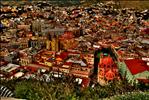

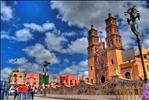




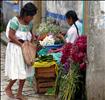











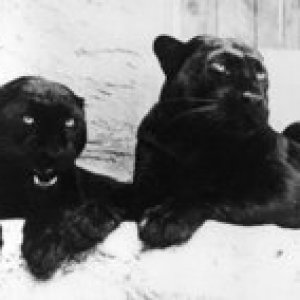


I liked
Guanajuato is an amazing place to visit!I disliked
Nothing